Have you ever felt like your deepest thoughts and feelings were trapped inside, longing to be expressed? Many artists struggle to bring their inner world to life in their work. Louise Bourgeois, a pioneering feminist sculptor, found a way to sculpt her subconscious and revolutionise modern art in the process.
Bourgeois used her art as a form of therapy, transforming childhood trauma and complex emotions into powerful sculptures. Her work dug deep into the human psyche, exploring themes of memory, identity, and the female experience. Through surreal spider sculptures and textile installations, she gave shape to the unseen parts of ourselves.
In this post, we’ll unravel the web of Bourgeois’ artistic journey. We’ll explore how she used subconscious expression to create deeply personal yet universally resonant art. From her iconic spider sculptures to her ground breaking feminist pieces, Bourgeois left an indelible mark on the art world. Join us as we delve into the mind of this extraordinary artist who turned her inner turmoil into timeless masterpieces.
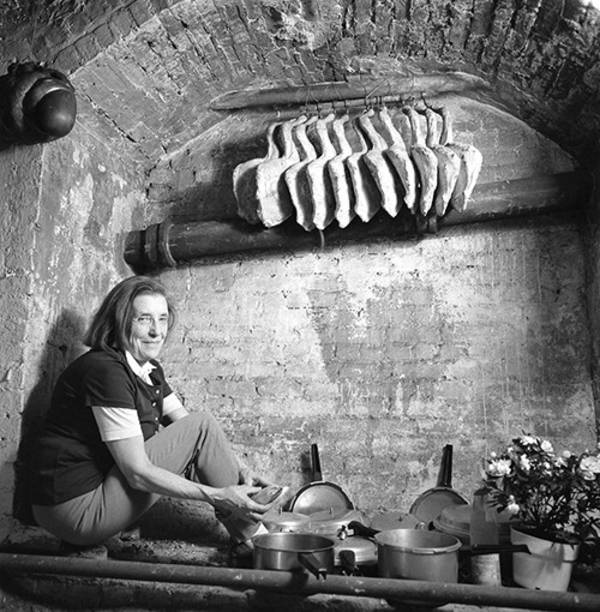
The Feminist Sculptor
Louise Bourgeois was a trailblazer in feminist sculpture, using her art to explore the female experience in bold new ways. She challenged how women were typically shown in art by creating sculptures that weren’t perfect or pretty. Instead, her work showed women as complex and real. Bourgeois often used parts of the body in her sculptures, but she twisted and changed them to make people think differently about women’s bodies and roles.
One of Bourgeois’ famous series, called “Femme Maison,” showed women with houses for heads. This was her way of talking about how women were often stuck in their homes and not seen as full people. She also made big spider sculptures that represented mothers as strong and protective. Bourgeois wasn’t afraid to show female bodies and sexuality in her art, even when it made people uncomfortable. She used her own life experiences, including difficult memories, to create art that spoke to many women. Her brave and honest work opened doors for other artists to explore feminist themes in their art too.
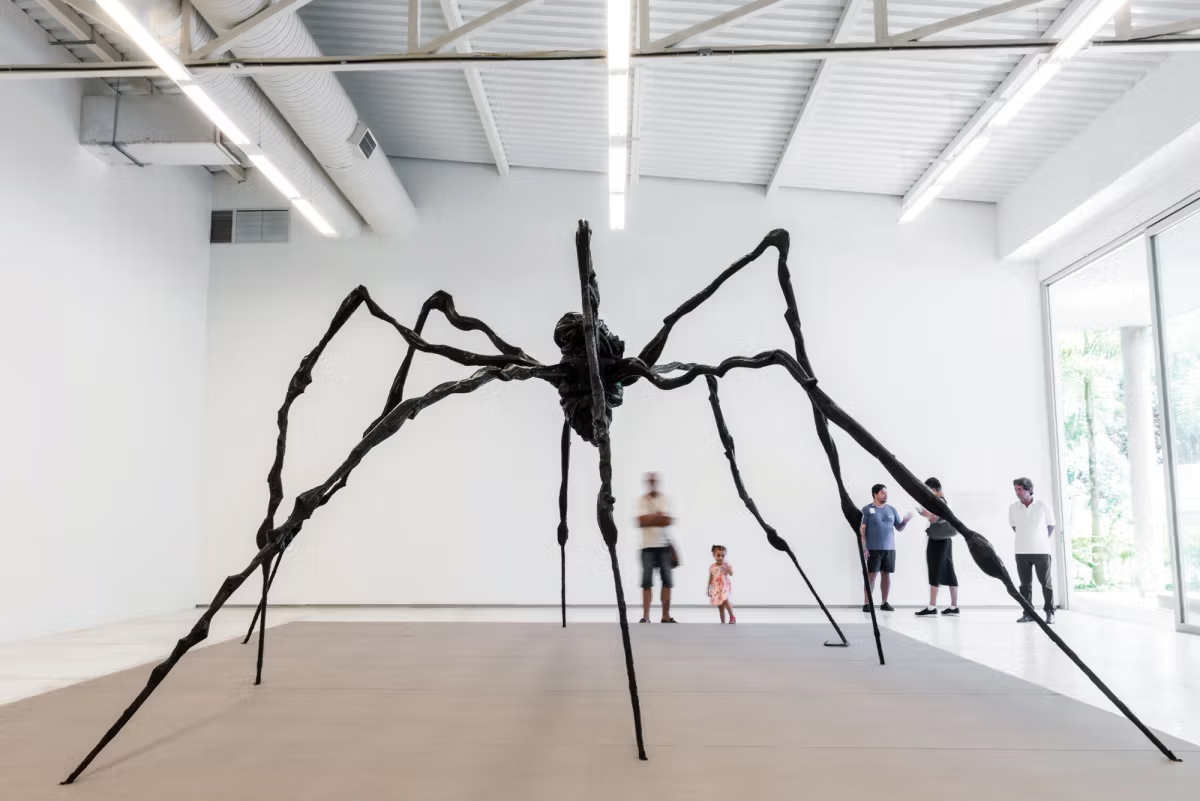
Weaving the Web of Memory: Bourgeois’ Artistic Journey
Louise Bourgeois’ artistic journey was a fascinating exploration of her inner world. She started her path in Paris, studying maths before switching to art. Her teacher, Fernand Léger, saw her talent for making 3D art. This early start set the stage for her amazing career in sculpture.
When Bourgeois moved to New York in 1938, she began to focus on sculpture. She started making big wooden sculptures on her building’s roof. This was the beginning of her love for creating art in three dimensions. As time went on, she used many different materials like wood, plaster, and even latex. Her art changed from simple shapes to more complex, abstract forms. Bourgeois used her art to express deep feelings and memories. She often drew from her childhood experiences and family relationships. This personal touch made her work powerful and unique. Her journey shows how art can help us understand ourselves and heal from past hurts.
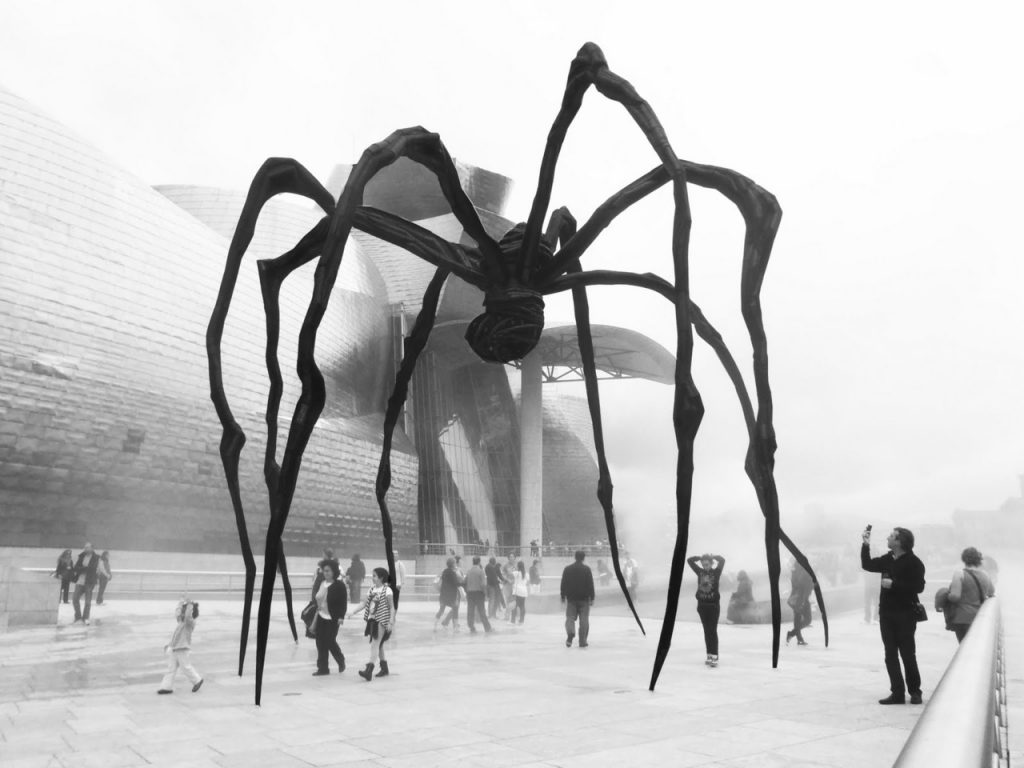
The Spider as Mother: Symbolism in Bourgeois’ Iconic Works
Louise Bourgeois saw spiders differently than most people do. To her, spiders weren’t scary creatures but loving symbols of her mother. Her most famous work, a giant spider sculpture called “Maman,” stands over 30 feet tall and carries marble eggs in its body. This massive artwork shows how Bourgeois connected spiders to motherhood and protection. Just as her mother worked carefully fixing tapestries, spiders patiently weave and repair their webs. Through her art, Bourgeois turned what many see as a frightening creature into a powerful symbol of maternal love and care.
The spider sculptures do more than just represent Bourgeois’ mother – they tell a deeper story about family relationships. While these towering spiders can seem intimidating at first glance, they also show strength and protection. Like a mother watching over her children, these spiders stand guard with both gentleness and power. Bourgeois admired how spiders could create beautiful webs and fix them when damaged, just as mothers work to keep their families together. Her unique view of spiders has changed how many people see these creatures, turning fear into understanding and appreciation.
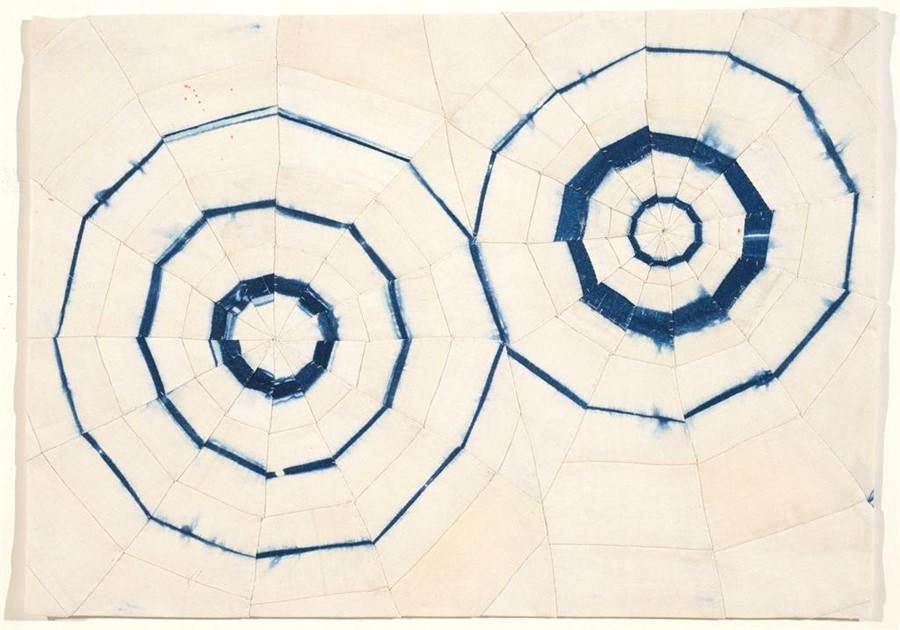
Fabric of Identity: Textile Art and Feminism
Louise Bourgeois turned everyday fabrics into powerful art that spoke about being a woman. She used old clothes and household textiles to create works that told personal stories. By choosing these materials, she gave new meaning to what many considered “women’s work” like sewing and weaving. Her fabric art didn’t just hang on walls – it challenged how people thought about women’s roles in art and society. She created pieces that showed raw emotions and experiences, from motherhood to personal struggles.
These textile works weren’t just about making pretty things – they were about healing and connection. For Bourgeois, sewing wasn’t just a craft; it was a way to piece together memories and feelings. She saw working with fabric as a chance to fix things that felt broken, both in art and in life. Through her work with textiles, she showed that materials often seen as ordinary could tell extraordinary stories about identity, memory, and personal growth. Her bold use of fabric helped change how the art world saw textile work, moving it from craft to fine art.
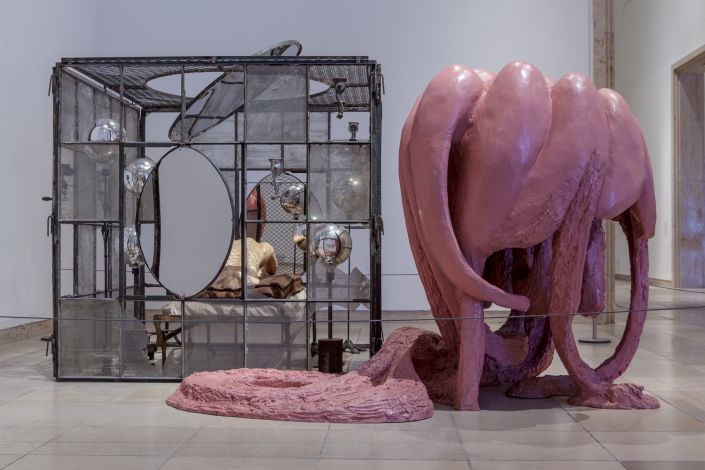
Sculpting the Psyche: Subconscious Expression and Catharsis
For Louise Bourgeois, making art was like opening a door to her deepest thoughts and feelings. She used sculpture to explore memories and emotions that were often hard to put into words. Her artwork became a way to heal from past hurts, especially difficult experiences from her childhood. Like a diary made of stone and metal, her sculptures told stories about fear, love, and family struggles. She believed artists had a special ability to tap into hidden thoughts and turn them into something others could see and understand.
Through her famous “Cells” series, Bourgeois created spaces that felt like walking into someone’s memories or dreams. These room-like sculptures held objects that triggered strong feelings – from old furniture to mysterious shapes that reminded viewers of their own experiences. She used symbols like spirals and cages to show how emotions can trap or free us. By sharing her personal journey through art, Bourgeois helped others understand their own feelings better. Her work showed that art could be more than just something beautiful – it could be a powerful way to heal and grow.
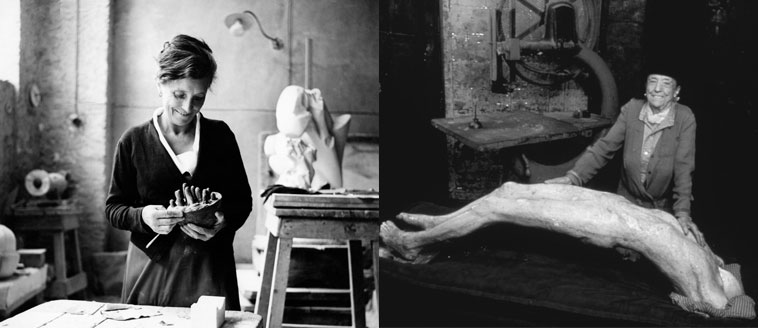
Family Ties: Childhood Trauma and Art as Therapy
Louise Bourgeois turned painful childhood memories into powerful art that helped her heal. Growing up in Paris, she faced deep hurts when her father had an affair with her English tutor. This betrayal, combined with losing her mother to illness when she was young, left lasting emotional wounds. These early experiences became the fuel for her artwork, as she used sculpture and drawing to work through her feelings. Her art studio became a place where she could face these difficult memories and turn them into something meaningful.
Art became Bourgeois’ way of staying mentally healthy, and she often said “Art is a guarantee of sanity.” She created famous works like “The Destruction of the Father” to express her anger about her childhood. Her well-known spider sculptures showed the mixed feelings she had about her mother. By sharing such personal stories through her art, Bourgeois did more than just heal herself – she showed other artists that they could use their own life stories to create powerful artwork. Her honest approach to dealing with family pain through art opened new doors for future artists.
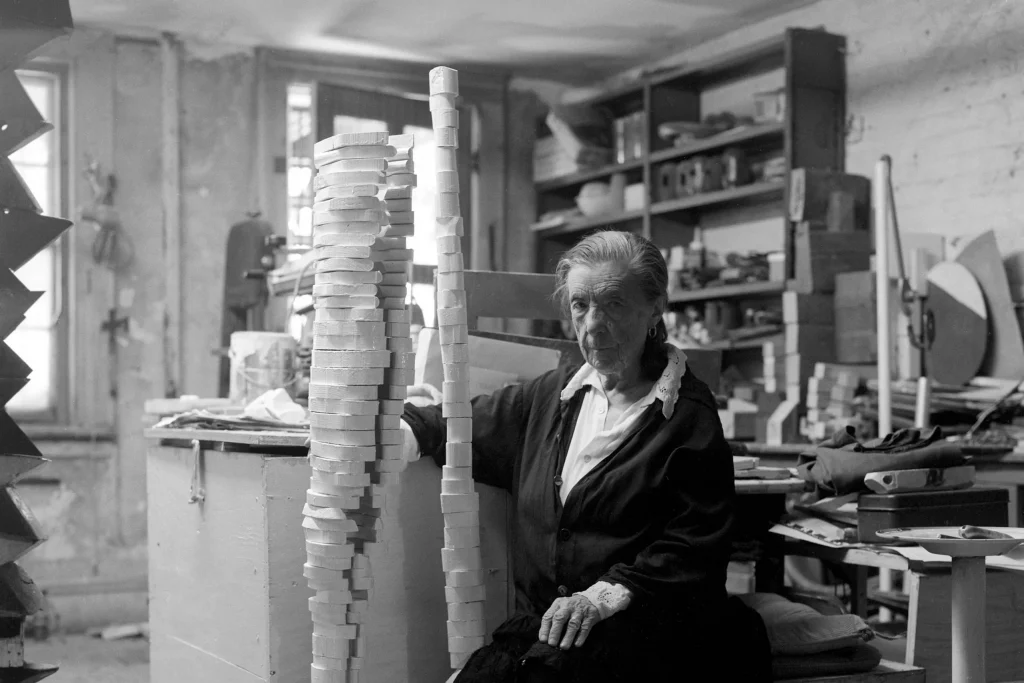
Breaking Boundaries: Bourgeois’ Impact on Modern Art
Louise Bourgeois changed how we think about art in bold new ways. She wasn’t afraid to mix different styles and use unusual materials in her work. From traditional marble and bronze to unexpected choices like latex and old fabric, she showed artists that anything could become art. Her work spoke openly about women’s experiences and identity at a time when few artists dared to do so. By turning her personal stories into art that everyone could relate to, she proved that individual experiences could tell bigger stories about society.
Her influence continues to shape how artists work today. Her famous “Cells” series – room-sized artworks that viewers could walk through – helped create a whole new kind of art called installation art. Many of today’s most famous artists say Bourgeois inspired them, including Tracey Emin and Kiki Smith. She also showed that age shouldn’t limit creativity – some of her best work came after she turned 80, proving that artists can keep growing and creating throughout their lives.
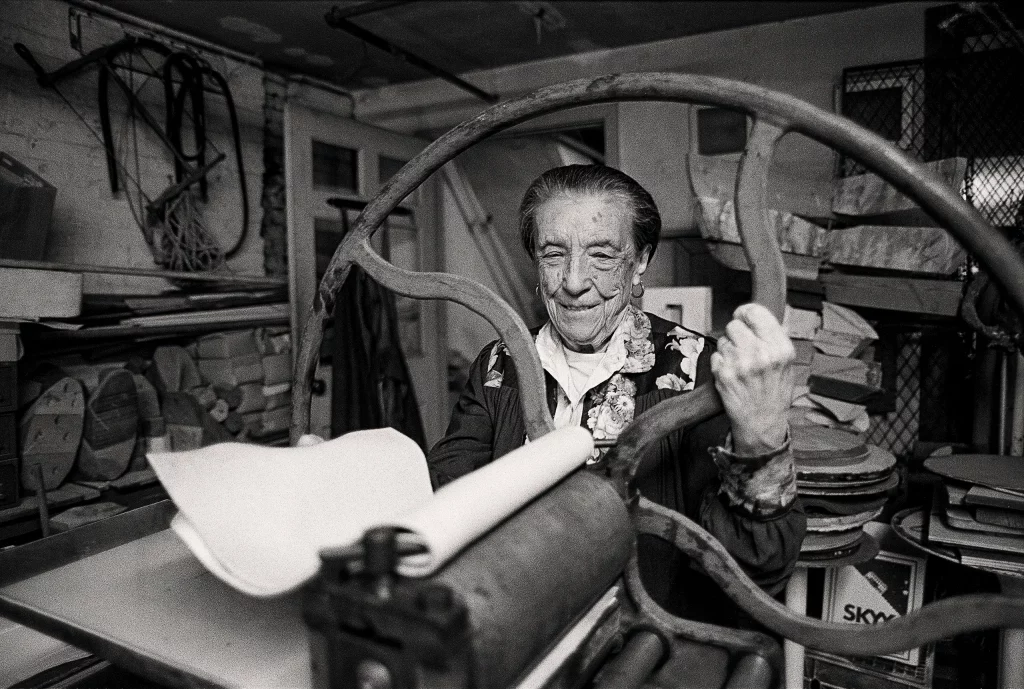
The Lasting Legacy of Louise Bourgeois
Louise Bourgeois left a mark on art that continues to grow stronger today. She broke new ground by being one of the first artists to openly explore women’s experiences in her work. Her art dealt with deep feelings and memories in ways that hadn’t been done before. She worked with all kinds of materials – from hard marble to soft fabrics – showing artists they could use anything to express themselves. By sharing her personal stories through art, she showed how one person’s experience could speak to everyone.
Her influence shows up everywhere in today’s art world. The room-sized installations she created, especially her famous “Cells” series, changed how artists think about space and emotion in art. She mixed different styles together, making it okay for artists to work across many types of art rather than sticking to just one. Even in her 80s and 90s, she kept making new and exciting art, inspiring older artists to keep creating. Artists today still look to her work when they want to explore personal identity, emotions, and family stories in their art.
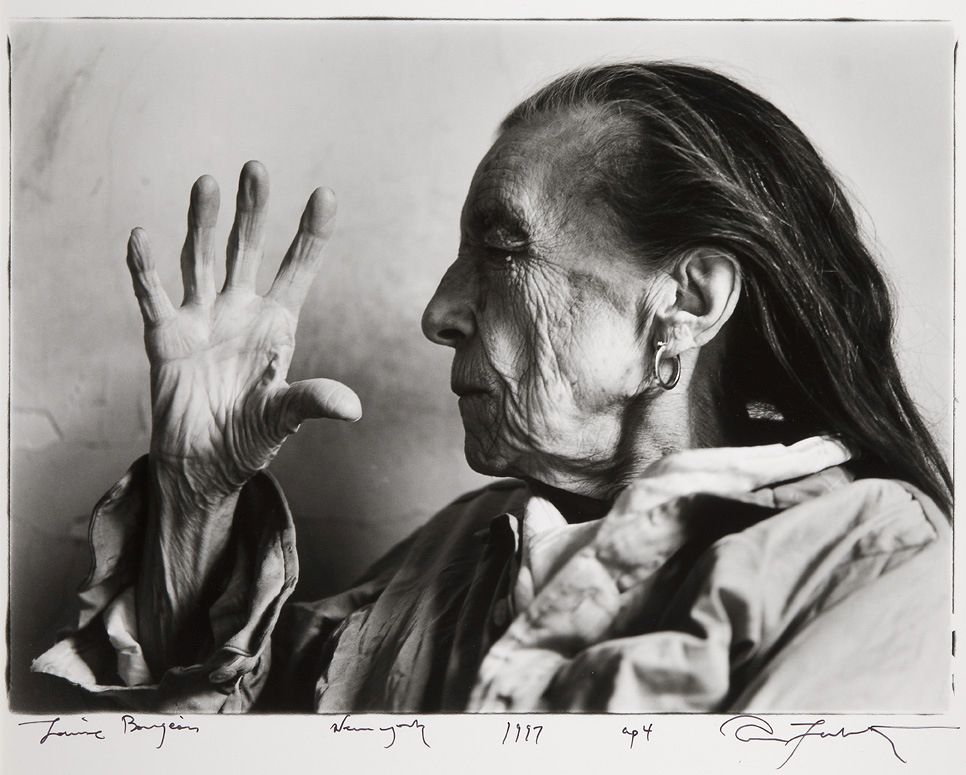
Conclusion
As we wrap up our journey through Louise Bourgeois’ remarkable life and art, remember that creativity knows no bounds. Like Bourgeois, you can turn your experiences, memories, and emotions into powerful forms of expression. Don’t be afraid to explore new materials or tackle difficult subjects in your art. Your unique perspective is valuable, and sharing it can touch others in ways you might not expect.
Art isn’t just for galleries – it can be a tool for healing, understanding yourself, and connecting with others. Whether you’re sculpting, painting, or working with fabric, let your inner world guide your creations. Remember, great art often comes from being honest and vulnerable.
If you’re inspired to learn more about Louise Bourgeois or want to discuss how to apply her techniques to your own artistic journey, feel free to reach out. You can contact me at semra@semrajelil.com for additional information or guidance. Keep creating, exploring, and pushing boundaries – your next masterpiece might be just around the corner!
FAQs:
1. Who was Louise Bourgeois?
Louise Bourgeois was a French-American artist known for her sculpture and installation art. She was a pioneer in feminist art and explored themes of memory, identity, and the female experience.
2. What materials did Bourgeois use in her art?
Bourgeois worked with a wide range of materials, including wood, bronze, marble, latex, and textiles. She was known for her innovative use of everyday materials in her sculptures and installations.
3. What is the significance of spiders in Bourgeois’ work?
Spiders were a recurring symbol in Bourgeois’ art, representing her mother. She saw spiders as protective and nurturing, much like her mother who worked repairing tapestries.
4. How did Bourgeois’ childhood influence her art?
Bourgeois’ childhood experiences, particularly her father’s affair with her English tutor, deeply influenced her art. She used her work as a way to process and heal from these early traumas.
5. What is the “Cells” series?
The “Cells” series is a collection of room-sized installations created by Bourgeois. These works explore themes of memory, emotion, and personal history through carefully arranged objects and sculptures.
6. How did Bourgeois contribute to feminist art?
Bourgeois was one of the first artists to openly explore female experiences in her work. She challenged traditional representations of women and addressed topics like sexuality and motherhood in her art.
7. What is “Maman”?
“Maman” is one of Bourgeois’ most famous works – a giant spider sculpture over 30 feet tall. It represents motherhood and protection, inspired by Bourgeois’ own mother.
8. How did Bourgeois use textile art?
Bourgeois incorporated textiles into her work, using fabric and sewing to explore themes of identity, memory, and healing. She elevated textile work from craft to fine art.
9. What is meant by “art as therapy” in relation to Bourgeois?
Bourgeois used her art as a form of emotional healing and self-expression. She believed that creating art helped her process difficult experiences and maintain her mental health.
10. How has Bourgeois influenced modern art?
Bourgeois’ work has influenced many contemporary artists. She pioneered installation art, encouraged the use of unconventional materials, and showed that personal experiences could be powerful subjects for art.


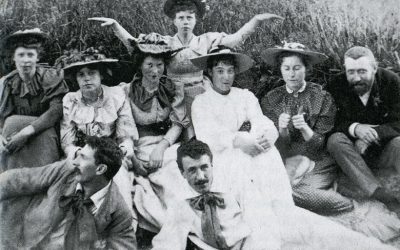
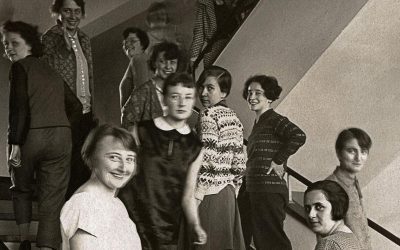

0 Comments